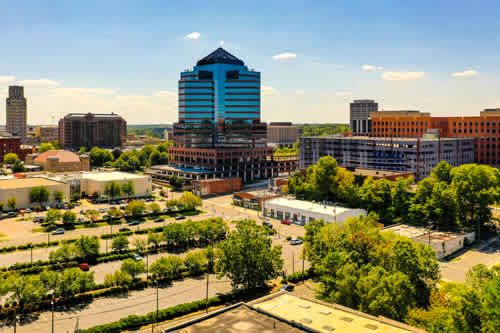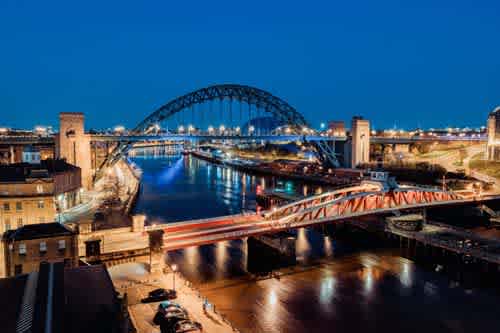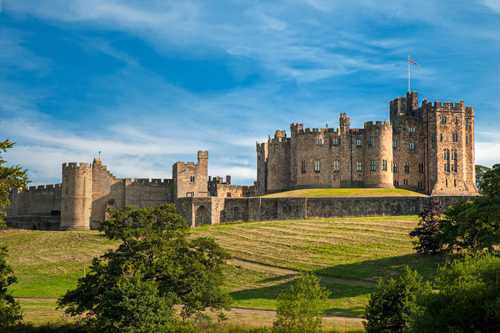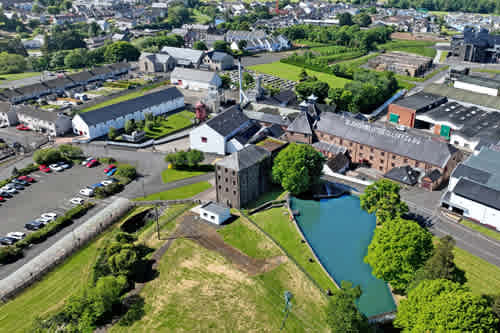In North East England you will discover some of the gems – everything you’re looking for.
About The North East
The Northeast region of England borders with Scotland to the North, The North Sea to the east and the Yorkshire Dales National Park to the west. The region which was part of Northumbria kingdom before the unification of England by William the Conqueror in 1066, saw some turbulent events in its past. It was the first place that was hit by Viking raids in the 8th century (793) and suffered during the border conflicts between English and Scottish forces, until the unifications of the 2 kingdoms in the 17th century. It is also the region that had great religious importance throughout the centuries. The ruins you see are those of a 12th century priory and the piece de resistance is the 8th century Lindisfarne Gospels.
Where to start?
How about with the Lindisfarne Castle, the priory, the historic church and the nature reserve where you can see the migratory birds of various species fly over, especially in the fall. What a wonderful blend of architectural and scenic beauty you have on this little island.
The Island can be reached by car or on foot during low tide (make sure to read warnings and instructions when there!). Bamburgh Castle, a Grade I listed building, is a must. It is one of the longest inhabited castles, home to kings since Anglo-Saxon times to this day. It has been standing guard over the Northumberland coast for hundreds of centuries and was a strategic point close to the border with Scotland.
The biggest city in North East England is Newcastle Upon Tyne aka Newcastle. Did you ask how it got its name? Very simply there was a new castle built in 1080 and that was where there was a long-abandoned Roman Fort. It is also known as one of the world's largest ship-building centers in the world! Close your eyes and imagine a city with bridges of which there are seven all within a mile of each other. As well, you can’t miss Grey’s Monument right in the middle of the city center, which commemorates Earl Grey, the former British Prime Minister Charles Grey and the man Earl Grey tea is named after.
Little Secret: If beer and not tea is your thing, then you should know that the city gave its name to the Newcastle ale.
Another important castle in the area is Alnwick Castle. Alnwick Castle has over 950 years of history to discover, and the origins of the Castle date back to the Norman period. Since 1309, its story has been intertwined with that of the Percy family, a powerful, noble family for much of the Middle Ages, with a history as illustrious as the castle’s. Alnwick has served as a military outpost, a teaching college, a refuge for evacuees, a film set, and not least as a family home. If it looks familiar to you, it is because Alnwick “starred” in the Harry Potter films as well in some scenes of the famous Downton Abbey TV series.
Durham Cathedral in the city of Durham is a fine example of Gothic architecture. The Cathedral was established in the year 800 by monks from Lindisfarne Abbey who carried the relics of Saint Cuthbert in order to save them from Viking raids. The Durham Cathedral, Durham Castle and the buildings located near them are all part of the UNESCO Heritage Site. The Shrine of St Cuthbert was originally ornate, decorated with jewels, worth quite a fortune. At the base of the shrine were four seats for pilgrims to kneel and receive the blessings of G-d and St. Cuthbert.
Hikers will love the Hadrian's Wall Path, a pathway that follows the Hadrian Wall. It is part of the UNESCO Transnational World Heritage Site Frontiers of the Roman Empire. The wall crosses the country from east to west and was built in the year 122 on the orders of the Roman Emperor Hadrian as a defensive fortification.
And as you drive the A1 or the A167 roads near Low Eighton, look up, look way up and you’ll see a landmark – a statue called the Angel of the North. It welcomes visitors to Newcastle/Gateshead and has become a symbol of Tyneside. It is one of the best-known pieces of art in the UK. It is a contemporary sculpture (1998) by Antony Gormley and is believed to be the largest sculpture of an angel in the world.
And when you’re ready to relax and take a break do so by meandering through the Saltwell Park, one of Britain’s finest examples of a Victorian park.
In North East England you will discover some of the gems – everything you’re looking for: castles, art & culture, pubs and restaurants, parks, panoramic landscapes of lakes, fields and hills and mountains. As well, a trip to the North East of England can be planned easily doing day trips from one central location in the area







